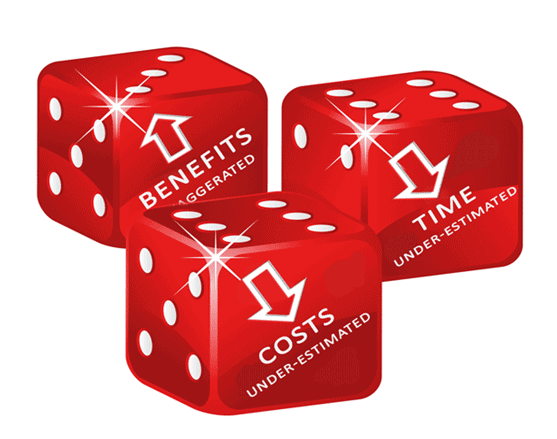Buyers Face 3 Business Case Challenges
- Buying Logic Examined
- Examining the Business Case – The Cost-Benefits Equation
- Salespeople Grapple With The Business Case
- Examining the Business Case – Strategic Fit
- The Business Case Is King!
- Examining the Business Case – Considerations Of Risk
- The Role Of The Business Case
- Examining the Business Case – The Building Blocks
- What Are Buyers Thinking?
- What Is The Business Case?
- Examining the Business Case – The Political Dimension
- Buyers Face 3 Business Case Challenges
Predicting the future is not easy, but that is exactly what the business case must attempt to do. This is particularly true in a time of market turbulence. Today’s perfect plan could be completely invalidated by a change in the competitive situation, an upset in the market or any one of a host of other factors outside the company’s control.

The Business Case And The Crystal Ball
However, when it boils down to it, there are three reasons why business cases get it wrong and the manager’s best-laid plans are foiled. You can think of them as Three Temptations. That is the temptation to:
- Underestimate costs.
- Exaggerate benefits.
- Underestimate the time required.
Most business cases fall victim to at least one of these problems. For example, in the area of IT projects it is regularly documented that 80% of projects fail. For this reason any business case should be subjected to sensitivity analysis in respect of these three key variables (as well as others). Thus a key question for the salesperson to help the buyer address is: ‘What would be the impact of a 5%, 10% or 15% variance in terms of the benefits, costs, or timing?’
When Temptations Are Greatest
Even with the greatest of management science, predicting the future can be a challenge. However, it is when there is more subjectivity than science that the temptations are at their strongest. This can happen in particular where:
- There is a powerful project sponsor (manager or department).
- Politics or vested interests are involved.
- There is urgency — most businesses don’t make their best decisions in a crisis.
- There is an element of vanity associated with the project.
- Stakeholders are attempting to justify past decisions.
- There is a high degree of risk and uncertainty involved.
- The decision is a new one (with no precedent or past experience).
- Clarity of plans, strategies and goals does not exist.
- The buying process is weak.
The salesperson must look out for all of the above factors as they make the success of even a compelling business case uncertain. When these factors are evident it is vitally important the salesperson follows steps to ensure that more accurate and objective business case financials can be prepared.
How To Ensure More Accurate Estimates
Business case decisions are not always going to be right, after all predicting the future is an imperfect science. All forecasts are simply estimates, which are in essence a sophisticated form of guesswork. However, the business case can increase accuracy by following these steps:
- State assumptions clearly.
- Test and validate assumptions.
- Examine alternatives.
- Present a number of scenarios.
- Include feasibility study type market/other data.
- Incorporate benchmarking data.
- Perform a sensitivity analysis.
- Allow for a contingency.
- Present an analysis and quantification of risks.
- Have the business case reviewed by experts.
The seller must leverage each of the above steps in terms of their influence over the buyer’s business case. This is particularly important given the skepticism among buyers of vendor ROI models.
Related
by Ray Collis
Ray Collis is author of 4 books on accelerating growth, His articles are just a sample of the research underpinning the Growth Pitstop - a powerful formula for accelerating growth. Ray is available to speak at conferences and events internationally.



































You must be logged in to post a comment Login